Affiliate disclosure: This post may contain affiliate links. Please see our Privacy Policy.
Animal fat salves were some of the original healing salves, made before modern processed vegetable oils.
Most processed vegetable oils are relatively new, but the tradition of making healing salves goes back much further than that. Beyond medicinal salves, utilitarian salves to condition boots, tents, and equipment in the field are easy to make with a bit of rendered animal fat.
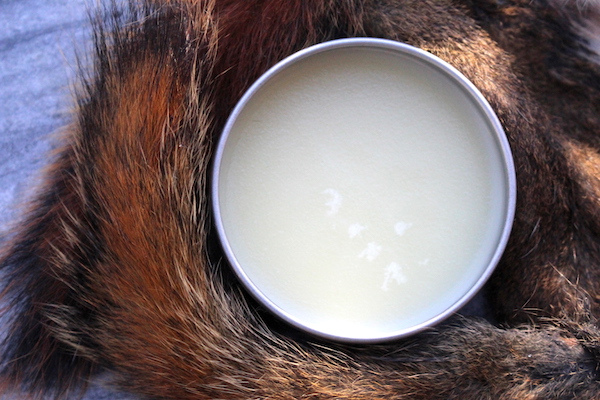
A few years back, I came across a vendor at the farmers market selling bear fat salve in tiny tins. My first thought, in all honesty, was “hardcore!”
My second thought was, wait, you can make a salve from animal fat?!?! Sure, why not.
Believe it or not, healing salves have been around for millennia, and long before vegetable oils became were cheap and plentiful. Sure, olive oil has been around for a long time, but it wasn’t widely available to the general public beyond the Mediterranean.
Historically, healing salves were made with whatever fat was readily available, and that might mean something like butter or ghee, but it also might mean rendered animal fat.
There are a number of herbs, especially those used topically, that have medicinal properties that are what’s known as “lipid soluble” which means they’re extracted in fats. It doesn’t matter much what type of fat, and in fact, animal fats might have their own particular benefits.
(Though I can’t find anyone that makes a bear fat salve anymore, bear hunting magazine has a bear fat salve recipe if you want to try it.)
Benefits of Animal Fat Salve
Not only can you make a salve using animal fat instead of processed vegetable oils, but there’s actually plenty of historical precedent for doing so. The same vendor also had sheep fat salve, made from their own sheep. According to their website, sheep fat has been used in traditional salves in Vermont for generations, and globally for much longer.
“In Kyrgyzstan, sheep fat treats coughs as a chest rub, and is drunk melted with hot milk for sore throats. In the Ukraine, sheep fat is valued as a healing salve for burns. In Zimbabwe, traditional healers use sheep fat to exorcize evil spirits, cure insomnia, neutralize mental disturbances, and as a love potion. Traditional Islamic medicine recommends sheep fat as a cure for sciatica. Old time Vermonters used sheep fat, or mutton tallow, mixed with pine resin, as a “drawing salve” to draw infections out (from splinters, ingrown toenails, etc.)
Sheep fat has a similar make-up to our cell membranes, making it easily absorbable and nourishing for skin. Sheep fat, or tallow, from grass-fed animals contains abundant fat-soluble vitamins A, D, and K, as well as vitamin E, which are all necessary for general health and for skin health. Sheep fat also contains fats such as conjugated linoleic acid (CLA), which has anti-cancer and anti-inflammatory properties, as well as palmitoleic acid, which has natural antimicrobial properties.”
The part about sheep fat being more absorbable reminds me of a pretty morbid plot point from Fight Club, where the main character is robbing liposuction clinics because human fat makes the best soap. I’m not planning on that anytime soon, but it does add credence to the practice of adding animal-based fats to cosmetics.
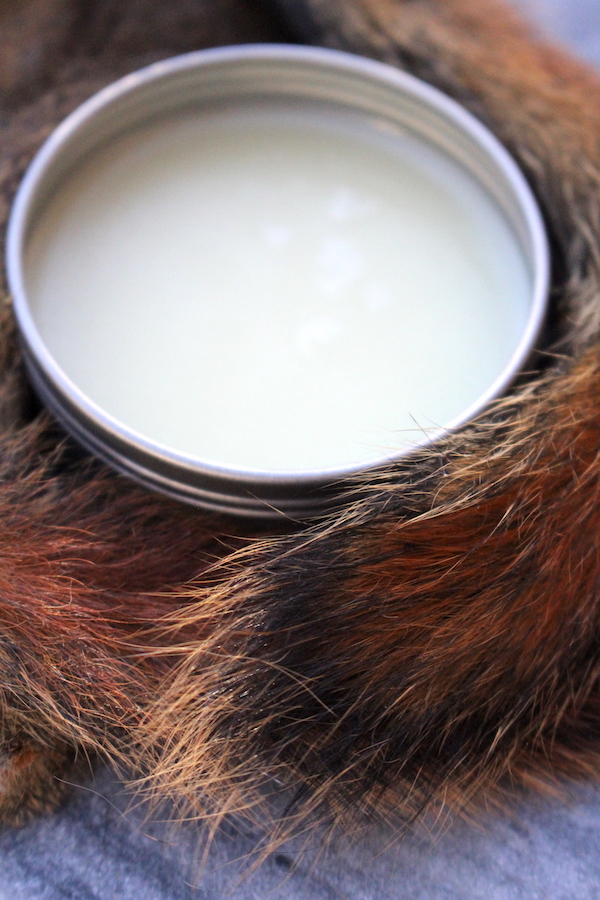
Wild Hunted Animal Fat Salve
The thing is, if you’re going to go through the effort of rendering animal fat, the very best use for it is in the kitchen. Rendered pork fat (namely, leaf lard) makes the best pie, and sheep fat is a big part of traditional Mongolian food (which gets cooked up a lot in my kitchen).
Wild animal fat is less tasty generally, and I can see no higher use for bear fat than in a salve. Somehow though, I forgot all about bear fat salve until I came across this video where they make a salve from the fat scrapings on a raccoon hide…
I don’t happen to have any fresh raccoon fat handy, but I do have some freshly rendered squirrel fat. I know, who has a jar of squirrel fat just sitting on their counter begging to be used? I do thank you very much.
I did a project this winter, trying to make wild foraged cookies from all wild harvested ingredients. Wild flours are easy to come by, as are wild sweeteners like homemade maple syrup…but oils are tricky unless you’re not picky about them being vegetarian. We made several batches, most of which were delicious, some of which, were less than great like these pine bark squirrel fat cookies (though the kids still loved them…).
Either way, there’s a pretty shocking amount of fat on a squirrel, and I still have plenty left. I considered making some type of healing salve, but what type of salve would be best suited to squirrel fat? An extended dinnertime conversation at my house yielded no promising suggestions.
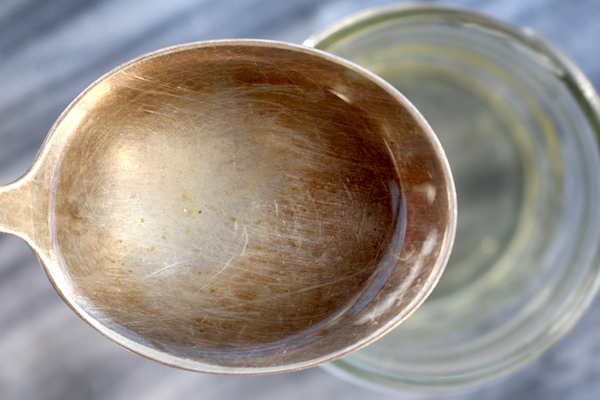
My husband suggested something for the legs, maybe to help one climb quicker and really infuse the squirrel spirit into it. My main thoughts were I just didn’t want to use it on any open wounds, due to an abundance of caution.
Perhaps the best use is a simple squirrel fat and beeswax mix, without added medicinal botanicals. That way, it’ll be perfect for waterproofing tools and rubbing into leather boots.
If you were to make a medicinal salve with animal fat though, it’d be no different than the process for making any medicinal salve. Start by making a herbal infused oil, either slowly on a windowsill or by gently warming it with the herbs in a slow cooker.
Strain out the herbal matter and proceed with making a salve as usual.
How to Make a Salve with Animal Fat
The process for making an animal fat salve isn’t much different than making any other salve. All you’re doing is substituting animal fat in place of some type of vegetable-based oil.
The fat can be infused with herbal botanicals, or not; it’s up to you. For a basic salve, you mix 1 cup of oil with 1 ounce of beeswax in a double boiler. Heat until the beeswax is dissolved, and then pour into tins for use.
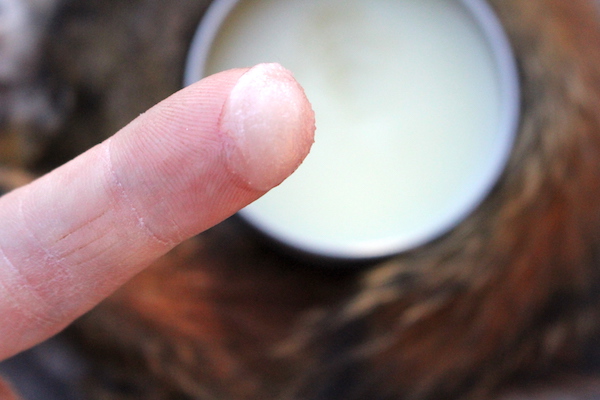
If you want to make a smaller amount, no problem; just start with less oil and add in a proportional amount of beeswax. When used with squirrel fat, which is liquid at room temperature like vegetable oil, this basic recipe results in a salve that holds its shape in the tin but is very soft and spreadable.
When using something like tallow, the results may be a good bit stiffer.
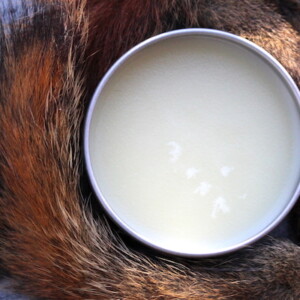
Making Fatwax (Animal Fat Salve)
Equipment
Ingredients
- 1 cup rendered fat
- 1 ounce beeswax
- Herbs to Infuse optional
Instructions
- If using herbs, add them to the animal fat and allow them to infuse for several weeks in a cool, dark place. Then strain them out.
- Add the animal fat and beeswax into a double boiler and heat until just melted. Immediately pour into salve tins.
- Allow the salve to harden for about 2 hours before use.
Notes
Survival Projects
Looking for more unique survival craft projects?
- Homemade Pemmican Lollipops (Meat Lollipops)
- How to Make Cookies After the Apocalypse (Wild Foraged Cookies)
- How to Make Primitive Arrows
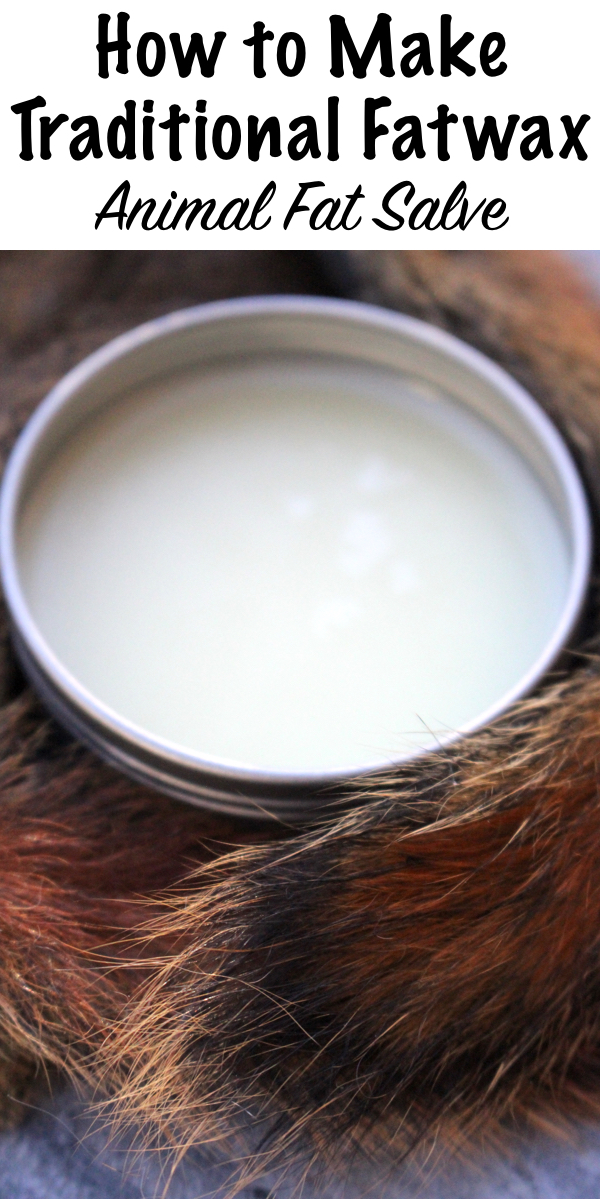


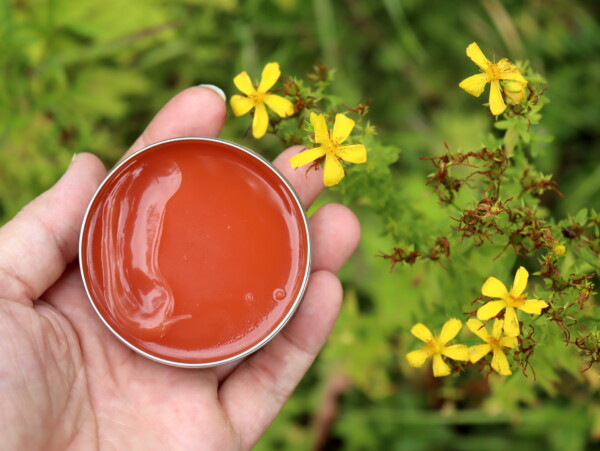
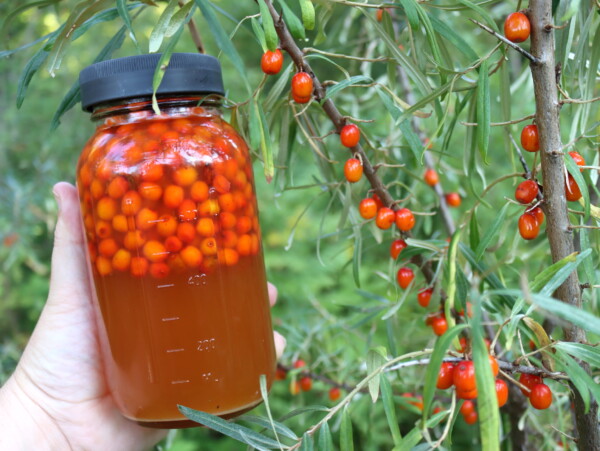
Can I use bacon grease?
You can definitely try it. Apparently this was done all the time. I have read articles where people said that their grandmothers used to use it.
How do I render chicken fat? How will it help with my cough and pain from a sinus issue?
Here is a post about uses for different animal fats. There is a link in the post that gives you specific instructions on how to render the chicken fat. Many times the fat or the wax is simply a medium for the herbs that you might be using to loosen congestion. You would infuse the herbs to the fat in order to make a salve.
Is there a natural alternative to beeswax?
What is it that you don’t like about the beeswax that you want an alternative for?
Can I freeze my animal fat salves after they have cooled completely? I can’t think why it wouldn’t be possible but I would appreciate your opinion. Many thanks, Christina
I’ve never heard of anyone freezing them before. I am assuming you could but I don’t know how the thawing process would affect the finished product. Is there a reason why you are wanting to freeze them?
Can I add just essential oils. I have bear fat that has been rendered and I want to turn it into salve with a chili essence oil.
Yes, you can definitely add essential oils in place of the herbs or in addition to the herbs.
I miss Michigan &!hunting and SC/GA., Farming ! Now in City (E.Coast 🤨😝)! Have a few OLD Processed GOAT hides , from Zabeeha ( Islamic Slaughter), and now they are Cracking ! Have NO idea where to Buy nonPork animal fat !
Hi! I’m glad to have found this! I am planning to make an herb infused emu oil, but I’d dont find cold oil infusions to be particularly strong. I normally use a plant oil, put it in a jar with herbs and put that in a crock pot with water at a low setting for 4ish hours. I was wondering if I could do this with animal fats. My concern is I’m less familiar with working with them and will the low heat negatively impact the oil and make it go rancid more quickly? Thanks!